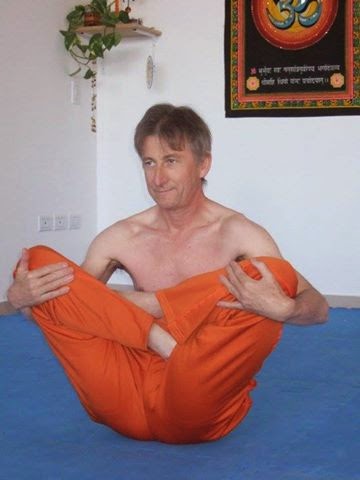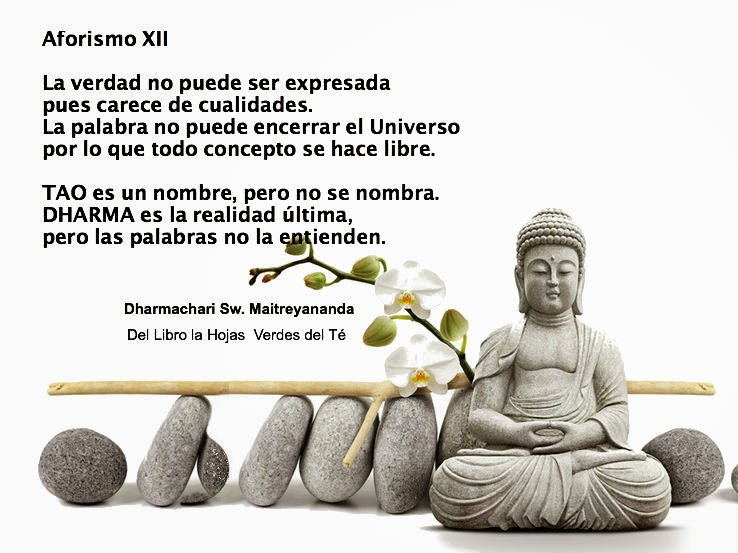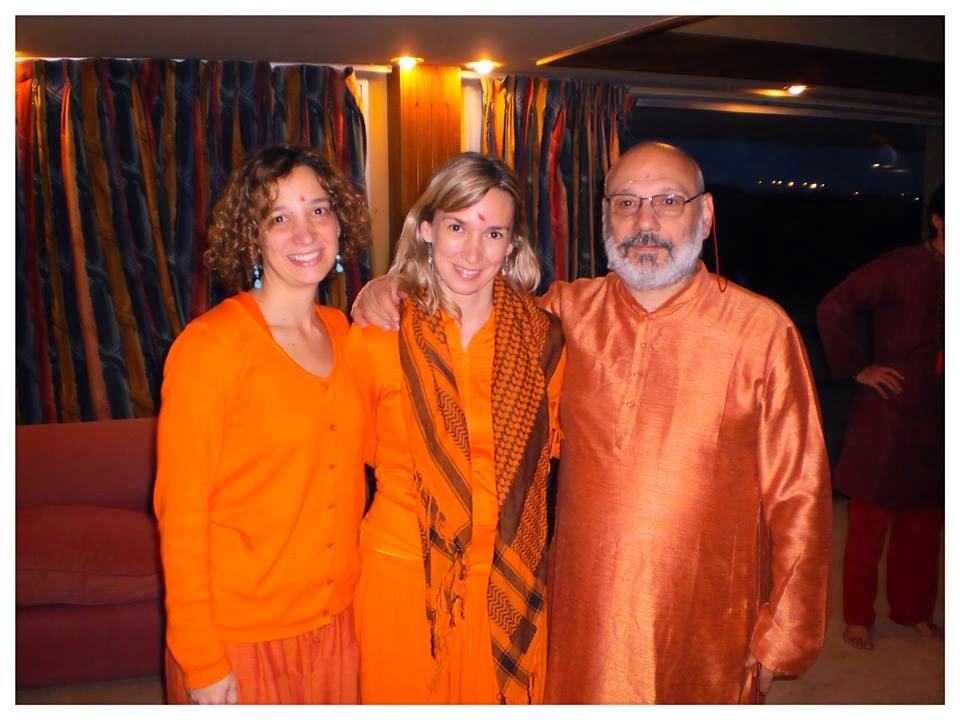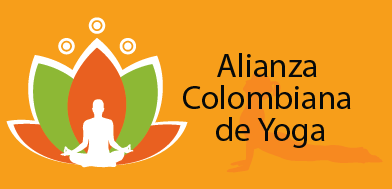An Interview with Swami Maitreyananda
Yogacharya Fernando Estevez Griego (Dharmachari Swami Maitreyananda) was born in 1956 on November 11 in Montevideo, Uruguay—the country where he lived his childhood and part of his adolescent years. He lived the years of his youth in the Bahamas, the United States, Canada, Spain, France, Switzerland, Israel, India and Argentina.
From 1987 is the director of International School of Integral Yoga founded by Swami Asuri Kapila in 1932, which is considered one of the world’s most prestigious and important Yoga Masters, as he is internationally considered an inescapable reference on this discipline. His training took place studying under the best and most renowned Yoga Masters of India, making him the direct disciple of, Swami Vishnudevananda (Sivananda), Yogavatar Krishna Kisore Dasji and the Venerable L. Ariyawansa Navaka Mahatera.
He graduated as a yoga teacher from the Sivananda Ashram and the Forest Vedanata University; he obtained the Yogacharya level or level of Yoga Master, in India.
He studied Bachellor of Medicine and Psychology and he is Doctor of Philosophy in Psychology, a Master In Yoga Therapy, a an Counsellor of Aryuveda, Master in Ayurveda Yoga Therapy and Football (Soccer) Fitness Trainer
He is one of the pioneers belonging to the International Yoga Federation, along with other Yoga Masters of national and continental yoga organizations.
In 1932 Swami Asuri Kapila founded his International School of Yoga Integral, which is considered one of the three best yoga schools in the world that has trained over 9.000 Yoga Masters or Yogacharyas, Masters, Teacher Trainers, Yoga Teachers and Yoga Instructors.
Yogacharya Estevez Griego was twice elected the International Yoga Federation President, from 1990-1992 and from 2003-2005. When he presided over the International Society of Integral Yoga, the “Aurobindo Sivananda Ashram®” Received the succession of Krishna Kisore Dasji in the World Yoga Council.
Yogacharya Estevez Griego is known all over the world for his charisma, wisdom, spirituality and his complete dedication to Yoga, resulting in a diversity of people from all over the world coming directly to receive his teachings at this school, in the gurukula tradition.
The Yogacharya freely offered us all his wisdom by answering each and every one of our questions about Yoga.
Yogacharya Fernando Estevez Griego (Dharmachari Swami Maitreyananda) was born in 1956 on November 11 in Montevideo, Uruguay—the country where he lived his childhood and part of his adolescent years. He lived the years of his youth in the Bahamas, the United States, Canada, Spain, France, Switzerland, Israel, India and Argentina.
From 1987 is the director of International School of Integral Yoga founded by Swami Asuri Kapila in 1932, which is considered one of the world’s most prestigious and important Yoga Masters, as he is internationally considered an inescapable reference on this discipline. His training took place studying under the best and most renowned Yoga Masters of India, making him the direct disciple of, Swami Vishnudevananda (Sivananda), Yogavatar Krishna Kisore Dasji and the Venerable L. Ariyawansa Navaka Mahatera.
He graduated as a yoga teacher from the Sivananda Ashram and the Forest Vedanata University; he obtained the Yogacharya level or level of Yoga Master, in India.
He studied Bachellor of Medicine and Psychology and he is Doctor of Philosophy in Psychology, a Master In Yoga Therapy, a an Counsellor of Aryuveda, Master in Ayurveda Yoga Therapy and Football (Soccer) Fitness Trainer
He is one of the pioneers belonging to the International Yoga Federation, along with other Yoga Masters of national and continental yoga organizations.
In 1932 Swami Asuri Kapila founded his International School of Yoga Integral, which is considered one of the three best yoga schools in the world that has trained over 9.000 Yoga Masters or Yogacharyas, Masters, Teacher Trainers, Yoga Teachers and Yoga Instructors.
Yogacharya Estevez Griego was twice elected the International Yoga Federation President, from 1990-1992 and from 2003-2005. When he presided over the International Society of Integral Yoga, the “Aurobindo Sivananda Ashram®” Received the succession of Krishna Kisore Dasji in the World Yoga Council.
Yogacharya Estevez Griego is known all over the world for his charisma, wisdom, spirituality and his complete dedication to Yoga, resulting in a diversity of people from all over the world coming directly to receive his teachings at this school, in the gurukula tradition.
The Yogacharya freely offered us all his wisdom by answering each and every one of our questions about Yoga.
We invite you to enjoy them.
swami maitreyananda
swami maitreyananda
swami maitreyananda
Question: What is yoga?
Sw. Maitreyananda: YOGA IS SPRITUAL EDUCATION.
Yoga is: a Psycho-Physical-Spiritual science, art and philosophy of life that integrates
together the three planes of human existence with the Universe or the Supreme or God or the All, by the means of SAMADHI, a state of existential plentitude, happiness or bliss. The first technique taught in the Sutras was Viyoga or the ability to separate the spirit from the mind and the body. We are what we feel, because the spirit of ourselves or of all things, is what we feel in the determined moment, generating an affective state. Yoga teaches the development of human spiritual intelligence, understanding it as an affective, sentimental and anemic adaptation-capacity of the individual and his surroundings. This capacity to adapt spiritually allows the yogi to surmount feelings and situations that are unbearable to other people.
The yogi, like all people who practice yoga, learns to feel. He begins to understand and learn that he is not with he thinks or believes, nor what motivates him to act (physical changes of the body plus the things that surround him: actions). The yogi begins to understand that his spirit is what he feels. He begins to know that it is more important To Be than To Have. It is more important to be a doctor, actor or yoga teacher than to have the title of doctor, actor or yoga teacher. It is more important to be happy than to have a happy face. Happiness is not something you own, happiness is achieved when one is happy. Freedom is the power to be, because having is always a transient state. In order to be oneself, one needs to learn to be. And in order to learn to be, one needs to communicate with his inner self, with his feelings, passions, yearnings, affections and anemic states. Our affective world is our Spirit. We say that spiritual intelligence is the human being’s capacity to adapt himself affectively, sentimentally and anemically with his surroundings. Yoga like any other science, allows him to work his affective intelligence (the capacity to understand and to adapt to the feelings and affections of others) and his emotional intelligence (the capacity to understand and adapt the emotions of his own self).
The final goal of Yoga is not to integrate the human being psycho-physically and spiritually, nor is the final goal of Yoga to integrate the individual socially and etho- ecologically. For 5.000 years the final goal of Yoga has been has been Samadhi, an experience of existential fullness that integrates us with God, the Universe and the All. This experience is only achieved with spiritual education and when we say “spiritual education” we are not referring to religious education or religiousness. Being spiritual does not mean being religious and being religious does not necessarily mean being spiritual. We are referring to the kind of spirit and spirituality that can be arrived at from art itself; few things are as spiritual as art. Art is the expression of the spirit. Art expresses our feelings. If we understand this vision we can understand how an asana or yoga pose can be spiritual simply because of the attitude one assumes in the pose (predisposition or an act).
Etymologically, it means to integrate or harness, to integrate myself with something by harnessing it, to put the harness on the horses to guide them. In this way, I integrate myself to the horses and the vehicle. Yog comes from Yug. Yug means to unite and Yog means to integrate. IT IS FOR THIS VERY REASON THAT ONE CAN SAY YOG OR YOGA.
The term Yoga: the term derives from the root YUJ which means “Dynamic Union”, “Integration”, “Harness”, “To Tie Together”. It has other connotations such as : “Union”, “A Conjunction of Stars”, “Grammatical Rule”, “Effort”, “Team”, “Means”, “Magic”, “Added”, etc. It
Sw. Maitreyananda: YOGA IS SPRITUAL EDUCATION.
Yoga is: a Psycho-Physical-Spiritual science, art and philosophy of life that integrates
together the three planes of human existence with the Universe or the Supreme or God or the All, by the means of SAMADHI, a state of existential plentitude, happiness or bliss. The first technique taught in the Sutras was Viyoga or the ability to separate the spirit from the mind and the body. We are what we feel, because the spirit of ourselves or of all things, is what we feel in the determined moment, generating an affective state. Yoga teaches the development of human spiritual intelligence, understanding it as an affective, sentimental and anemic adaptation-capacity of the individual and his surroundings. This capacity to adapt spiritually allows the yogi to surmount feelings and situations that are unbearable to other people.
The yogi, like all people who practice yoga, learns to feel. He begins to understand and learn that he is not with he thinks or believes, nor what motivates him to act (physical changes of the body plus the things that surround him: actions). The yogi begins to understand that his spirit is what he feels. He begins to know that it is more important To Be than To Have. It is more important to be a doctor, actor or yoga teacher than to have the title of doctor, actor or yoga teacher. It is more important to be happy than to have a happy face. Happiness is not something you own, happiness is achieved when one is happy. Freedom is the power to be, because having is always a transient state. In order to be oneself, one needs to learn to be. And in order to learn to be, one needs to communicate with his inner self, with his feelings, passions, yearnings, affections and anemic states. Our affective world is our Spirit. We say that spiritual intelligence is the human being’s capacity to adapt himself affectively, sentimentally and anemically with his surroundings. Yoga like any other science, allows him to work his affective intelligence (the capacity to understand and to adapt to the feelings and affections of others) and his emotional intelligence (the capacity to understand and adapt the emotions of his own self).
The final goal of Yoga is not to integrate the human being psycho-physically and spiritually, nor is the final goal of Yoga to integrate the individual socially and etho- ecologically. For 5.000 years the final goal of Yoga has been has been Samadhi, an experience of existential fullness that integrates us with God, the Universe and the All. This experience is only achieved with spiritual education and when we say “spiritual education” we are not referring to religious education or religiousness. Being spiritual does not mean being religious and being religious does not necessarily mean being spiritual. We are referring to the kind of spirit and spirituality that can be arrived at from art itself; few things are as spiritual as art. Art is the expression of the spirit. Art expresses our feelings. If we understand this vision we can understand how an asana or yoga pose can be spiritual simply because of the attitude one assumes in the pose (predisposition or an act).
Etymologically, it means to integrate or harness, to integrate myself with something by harnessing it, to put the harness on the horses to guide them. In this way, I integrate myself to the horses and the vehicle. Yog comes from Yug. Yug means to unite and Yog means to integrate. IT IS FOR THIS VERY REASON THAT ONE CAN SAY YOG OR YOGA.
The term Yoga: the term derives from the root YUJ which means “Dynamic Union”, “Integration”, “Harness”, “To Tie Together”. It has other connotations such as : “Union”, “A Conjunction of Stars”, “Grammatical Rule”, “Effort”, “Team”, “Means”, “Magic”, “Added”, etc. It
is related to the English YOKE, the French JOUG, the German JOCH, the Greek EUVOC, the
Latin IUGUM, the Russian IGO, and the Spanish YUGO.
It also means “Dynamic Union”, “Integration”, “Tie”, and “To Join”. It has other connotations like: “Union”, “Conjunction of Stars”, “Grammatical Rule”, “Effort”, “Team”, “Means”, “Magic”, “Added”, etc.
The word first appeared in the Vedic era in the Taittriya Upanishad. The word appeared meaning “control of the senses”. Later, in the Maitrayani Upanishad, some of the Yoga techniques were exposed. The base of the Yoga philosophy is santosha: contentment-- content to have been born and to have the opportunity to live. It deals with seeing the glass half full, being positive, saying “how wonderful it is that the glass is half full”, not thinking negatively that the glass is half empty. It deals with looking for the necessary and not thinking so much in the desirable. In other words, it is not prioritizing the desirable over the necessary. Water is necessary whereas Coca Cola is a desire and is not necessary.
It also means “Dynamic Union”, “Integration”, “Tie”, and “To Join”. It has other connotations like: “Union”, “Conjunction of Stars”, “Grammatical Rule”, “Effort”, “Team”, “Means”, “Magic”, “Added”, etc.
The word first appeared in the Vedic era in the Taittriya Upanishad. The word appeared meaning “control of the senses”. Later, in the Maitrayani Upanishad, some of the Yoga techniques were exposed. The base of the Yoga philosophy is santosha: contentment-- content to have been born and to have the opportunity to live. It deals with seeing the glass half full, being positive, saying “how wonderful it is that the glass is half full”, not thinking negatively that the glass is half empty. It deals with looking for the necessary and not thinking so much in the desirable. In other words, it is not prioritizing the desirable over the necessary. Water is necessary whereas Coca Cola is a desire and is not necessary.
Question: In what era, in what country, city or civilization, did
yoga originate?
Sw. Maitreyananda: Historically, it was brought to India, but India is where it was established and flourished.
Question: What place does yoga occupy within the Hindu philosophy?
Sw. Maitreyananda: Yoga occupies a place of privilege in Hinduism, as it is one of the six Darshanas or forms of living within the Sanatan Dharma. Yoga occupies this privileged place outside of Hinduism also.
Sw. Maitreyananda: Historically, it was brought to India, but India is where it was established and flourished.
Question: What place does yoga occupy within the Hindu philosophy?
Sw. Maitreyananda: Yoga occupies a place of privilege in Hinduism, as it is one of the six Darshanas or forms of living within the Sanatan Dharma. Yoga occupies this privileged place outside of Hinduism also.
Question: What is Hinduism?
Sw. Maitreyananda: Hinduism is an ancient culture that encompasses a variety of rich ancestral customs from different towns and races that had interacted with each other, giving place to different types of art, sciences, disciplines, sports and diverse rights related to each act of life. Hinduism, contrary to what many believe, is not composed only of one religion that has had a historical and precise founder like in the case of other religions. Rather, it includes an incredible variety of religions profoundly different from one another. It includes opposite principles and is directed towards different goals. We ought to summarize a vast number of philosophies, schools of thought and spirituality that allow the transmition of amplitude of ways of to be in the World and in our particular social lives. The particular part about Hinduism is that it was enriched by more than 3.000 dialects, various languages and writing systems.
Sw. Maitreyananda: Hinduism is an ancient culture that encompasses a variety of rich ancestral customs from different towns and races that had interacted with each other, giving place to different types of art, sciences, disciplines, sports and diverse rights related to each act of life. Hinduism, contrary to what many believe, is not composed only of one religion that has had a historical and precise founder like in the case of other religions. Rather, it includes an incredible variety of religions profoundly different from one another. It includes opposite principles and is directed towards different goals. We ought to summarize a vast number of philosophies, schools of thought and spirituality that allow the transmition of amplitude of ways of to be in the World and in our particular social lives. The particular part about Hinduism is that it was enriched by more than 3.000 dialects, various languages and writing systems.
4
Question: Who was historically the first Yoga Master who began
the teachings of yoga?
Sw. Maitreyananda: Shiva, then Matsyendra and Hiranyagarbha
Sw. Maitreyananda: Shiva, then Matsyendra and Hiranyagarbha
swami maitreyananda
Master?
Sw. Maitreyananda: Well, several. In the case of Shiva, his principal disciple was Matsyendra. In Hiranyagarbha’s case, they were Gonika and Patanjali. The latter codified the teachings in the Yoga Sutras.
Question: Where do we find the first archeological discoveries of a certain yoga practice?
Sw. Maitreyananda: Adduara in Sicily and Mohendo Daro in Pakistan, in what was Ancient India.
Sw. Maitreyananda: Well, several. In the case of Shiva, his principal disciple was Matsyendra. In Hiranyagarbha’s case, they were Gonika and Patanjali. The latter codified the teachings in the Yoga Sutras.
Question: Where do we find the first archeological discoveries of a certain yoga practice?
Sw. Maitreyananda: Adduara in Sicily and Mohendo Daro in Pakistan, in what was Ancient India.
swami maitreyananda
swami maitreyananda
swami maitreyananda
swami maitreyananda
swami maitreyananda
swami maitreyananda
swami maitreyananda
swami maitreyananda
swami maitreyananda
swami maitreyananda
swami maitreyananda
swami maitreyananda
swami maitreyananda
swami maitreyananda
swami maitreyananda
swami maitreyananda
swami maitreyananda
swami maitreyananda
swami maitreyananda
swami maitreyananda
swami maitreyananda
swami maitreyananda
swami maitreyananda
swami maitreyananda, bikram
swami maitreyananda
swami maitreyananda
swami maitreyananda
swami maitreyananda
swami maitreyananda
swami maitreyananda
swami maitreyananda
Question: What is the most ancient text known with reference to
yoga?
Sw. Maitreyananda: The Upanishads
Question: What are the most important written texts on yoga?
Sw. Maitreyananda: The Yoga Sutras, the Bhagavad Guita or Yoga Sastra, the Vedas, the Tantras.
Sw. Maitreyananda: The Upanishads
Question: What are the most important written texts on yoga?
Sw. Maitreyananda: The Yoga Sutras, the Bhagavad Guita or Yoga Sastra, the Vedas, the Tantras.
swami maitreyananda
swami maitreyananda
swami maitreyananda
swami maitreyananda
swami maitreyananda
swami maitreyananda
swami maitreyananda
swami maitreyananda





































































